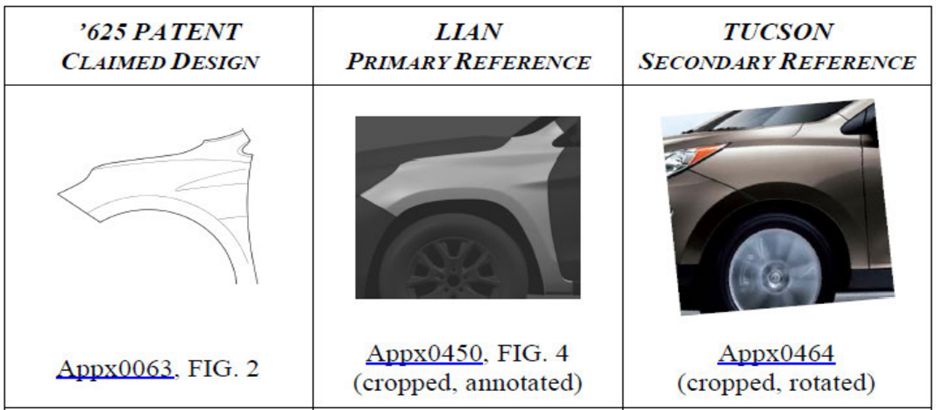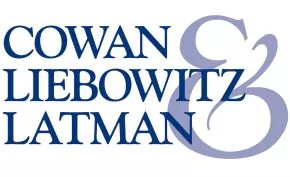On May 21, 2024, the full U.S. Court of Appeals for the Federal Circuit (in a proceeding known as an en banc rehearing) issued a decision in LKQ Corp. v. GM Global Technology Operations LLC, No. 2021-2348 (Fed. Cir. 2024). The Federal Circuit overruled earlier cases that dictated the long-standing, rigid two-part test for determining the obviousness of designs in the context of design patents. Instead, it adopted a more flexible four-part test applicable to utility patents. One Circuit Court Judge wrote a concurring opinion arguing that the overruled cases expressed the concepts adopted by the Court majority, albeit with a couple of unnecessarily strong words, and instead should have been modified rather than overruled.
The Dispute
In this case, GM Global Technology LLC (GM) owns U.S. Design Patent No. D797,625 for the design of the front fender used in General Motors' 2018–2020 Chevrolet Equinox automobile ('625 patent).
LKQ Corporation and Keystone Automotive Industries, Inc. (collectively, LKQ) challenged as unpatentable the '625 design patent before the Patent Trial and Appeal Board (Board). LKQ contended that the GM design (1) lacked novelty based on U.S. Design Patent No. D773,340 (Lian), or (2) was obvious, based either on Lian alone, or Lian as modified by the front fender of a 2010 Hyundai Tucson (Tucson).
A comparison of the three references is shown below:

Patent Trial and Appeal Board Decision
To determine the obviousness of the claimed front fender design, the Board applied the long-established test from In re Rosen, 673 F.2d 338 (CCPA 1982) and Durling v. Spectrum Furniture Co., 101 F.3d 100 (Fed. Cir. 1996) (Rosen-Durling test). This two-part test requires: (1) a "Rosen" primary reference that has design characteristics "basically the same" as the claimed design; and if found, then (2) any "Durling" secondary references 'so related' to the primary reference that ornamental features in one would suggest the application of those features to the other."
The Board found that the Lian design "Rosen" reference proffered by LKQ was not "basically the same" as the claimed design. The Board considered a number of differences, including the upper protrusion, the U-shaped notch, the door cut line, the circular wheel arch, the lower terminus, the creases along with the concavity line, and the inflection line. Accordingly, the Board held that the Lian design did not qualify as a "Rosen" primary reference, and the claimed design was thus nonobvious. This ended the Board's obviousness analysis without further consideration.
However, as an alternative ground, the Board also found that LKQ failed to identify "the correct visual impression created by the patented design as a whole" in its verbal claim construction.
Court of Appeals for the Federal Circuit Decision
On appeal, a three-judge panel of the Federal Circuit initially affirmed the Board's decision of nonobviousness.
Nevertheless, upon rehearing en banc, the full Federal Circuit, which had never before considered the merits of the Rosen-Durling test, took this opportunity to review it in the current case. The Court of Appeals overruled the Rosen-Durling test, vacating both the Board's decision and the Court's original panel decision as to the nonobviousness determination.
The Federal Circuit remanded the case to the Board for further proceedings with respect to the nonobviousness determination consistent with the Court's opinion.
The Rosen-Durling Test is Overruled
After the grant of GM's petition for rehearing, the Federal Circuit requested briefing on the following questions:
- Whether U.S. Supreme Court precedent overrules or abrogates the Rosen-Durling test;
- If not, whether the Federal Circuit should nonetheless eliminate or modify the Rosen-Durling test; and
- If either (1) or (2) is answered affirmatively, what is the appropriate test to evaluate design patent obviousness.
In considering these questions, the Federal Circuit said it was adopting an approach consistent with Congress's statutory scheme, which provides the same patentability conditions for utility patents and design patents. After reviewing the Supreme Court's decisions in obviousness cases involving respectively utility patents and design patents, the Federal Circuit concluded that the Rosen-Durling test was "improperly rigid," in contrast to the Supreme Court's more flexible approach for determining obviousness.
In particular, the Federal Circuit found that requiring a primary reference that is "basically the same" as the claimed design--the first step of Rosen-Durling test--was improperly rigid and did not align sufficiently with the Supreme Court's guidance and analysis. Similarly, the Federal Circuit concluded that the second step of the Rosen-Durling test—that any secondary references "must be 'so related' to the primary reference that features in one would suggest application of those features to the other"—was inconsistent with the breadth of the statutory standard for obviousness.
The Graham Test is Adopted
With the Rosen-Durling test overruled, the Federal Circuit reasoned that the proper test for evaluating design patent obviousness should consist of the same four factors applied by the Supreme Court to assess utility patent obviousness in Graham v. John Deere Co. of Kansas City, 383 U.S. 1 (1966) (Graham factors):
- the scope and content of prior art within the knowledge of an ordinary designer in the field of the design;
- the differences between prior art designs and the claimed design;
- resolution of the level of ordinary skill in the pertinent art; and
- any secondary considerations of nonobviousness, including commercial success, industry praise and copying.
With respect to the first Graham factor, the Federal Circuit held that "there is no threshold similarity or 'basically the same' requirement to qualify as prior art." Instead, the prior art has to be "analogous art," which in this context would include designs of the same or sufficiently similar articles of manufacture that one of ordinary skill would look to for designs. The Court determined that the primary reference, which will likely be "the prior art design that is most visually similar to the claimed design," is not required to be "basically the same" as the claimed design for a finding of obviousness, so long as it is analogous art. The Court indicated that a determination of whether prior art is analogous art is a question of fact, to be addressed on a case-by-case basis.
As for the second Graham factor, the Court indicated that the visual appearance of the claimed design is compared with the prior art "from the perspective of an ordinary designer in the field of the article of manufacture."
Regarding the third Graham factor, an assessment is made as to whether an ordinary designer in the field of the claimed design would have been motivated to modify the prior art to create the same overall appearance as the claimed design. The Court pointed out that when combining multiple references, "the primary and secondary references do not have to be 'so related' such that the features in one would suggest application of those features in the other." Rather, they must be analogous art to the claimed design, and there must be "some record-supported reason" for an ordinary designer to modify the primary reference with the feature(s) from secondary reference(s).
Finally, for the fourth Graham factor, namely, the evaluation of any secondary considerations, the Court pointed out that nonobviousness of design patents may be demonstrated through evidence of commercial success, industry praise, and copying. However, the Court remarked "it is unclear" whether such other factors as long-felt but unresolved needs, and failure of others, would be applicable to a design patent obviousness evaluation.
GM, and several submitters of "friend-of-the-court" briefs, raised concerns that the substitution of the Graham test for the Rosen-Durling test would introduce uncertainty, confusion, and disruption to settled expectations for nonobviousness issues in design patents. The Court was not persuaded, as the Graham four-part obviousness test has existed for utility patents for nearly six decades and would be equally workable for design patents.
On the other hand, the Court reaffirmed the principle that a design is better represented by an illustration, and a detailed verbal description of the claimed design is not required, as would typically be true for a utility patent.
Author's Note:
The Federal Circuit's upending of the long-established and relied-upon Rosen-Durling test in favor of the more flexible Graham test brings about a much broader application of prior art in design patent obviousness determinations. It potentially puts many existing design patents at risk to invalidation challenges. It also may make it more difficult to obtain design patents in the future.
Immediately after the Court's decision in LKQ, the U.S. Patent and Trademark Office (USPTO) issued an "Updated Guidance and Examination Instructions for Making a Determination of Obviousness in Designs in Light of LKQ Corp. v. GM Global Tech. Operations LLC" on May 22, 2024 to provide new guidance for evaluating obviousness in design patent applications using the Graham four-part test.
The USPTO now instructs patent examiners to use the below factual inquiry into design patent obviousness:
- The degree of visual similarity to the claimed design of the primary reference, which need not be "basically the same" and which may be in the same field of endeavor, or if "analogous art" outside that field of endeavor, the degree to which an ordinarily skilled designer would be motivated to consider other fields;
- The differences between the prior art and the claimed design from the perspective of an ordinary designer in the field of the article of manufacture;
- Consideration of the knowledge of a designer of ordinary skill who designs articles of the type being examined; and
- Whenever present, any secondary considerations as indicia of obviousness or nonobviousness.
In sum, consistent with the LKQ holding, the USPTO will look to, "some record-supported reason (without impermissible hindsight) that an ordinary designer in the field of the article of manufacture would have modified the primary reference with the feature(s) from the secondary reference(s) to create the same overall appearance as the claimed design."
What all this means in practice as applied to the LKQ design, and to other designs, awaits further decisions.
The content of this article is intended to provide a general guide to the subject matter. Specialist advice should be sought about your specific circumstances.


